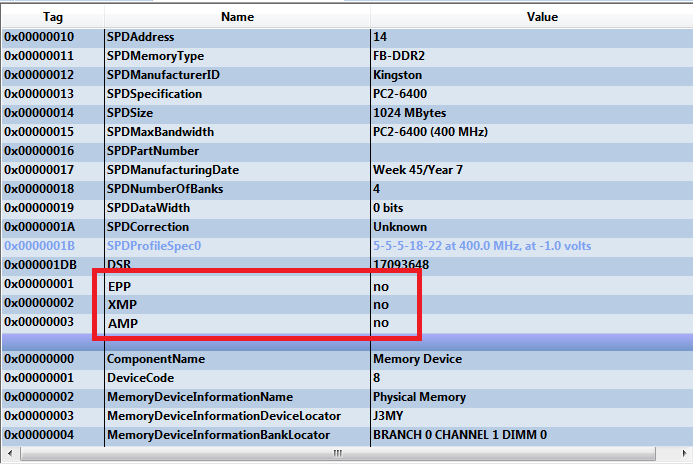Recently there was an issue reported by a customer regarding memory not being detected or working correctly on motherboards with the AMD A55M chipset.
This issue discussed in this case is related to both the features and settings of the memory module, the features and settings in the motherboard BIOS, and how these can effect memory testing on 1600 spec memory on motherboards with the AMD A55M chipset.
The motherboard maker AMD recommends verifying that AMP, DOCP or XMP is enabled in the BIOS. This functionality will make sure correct SPD memory information (latency, frequency, voltage) provided by DIMM module vendor and/or AMD motherboard are setup correctly. This functionality will be provided on FX, APU and SoC parts.
- A.M.P. (profile set by AMD)
- D.O.C.P. (profile set by motherboard vendor)
- X.M.P. (profile set by memory vendor)
It is known that these setting are only implemented in BIOS using the latest AGESA code supplied by AMD.
The memory supplier in this case acknowledged that the main issue encountered with AMD motherboards and memory compatibility was that all the modules have neither XMP nor AMP support.”
The memory supplier also reported that it is possible in some cases to get failing memory to work by…
- Lowering the DRAM frequency to 1333MHz can boot up all the failed kits. (Native DRAM frequency is 1600MHz).
- Pushing the DRAM voltage to 1.65V can boot up some of the failed kits.
But this was not successful in all cases.
So in this case, in order to for 1600 spec memory to work properly on motherboards with the AMD A55M chipset, the motherboard needs to support AMP, DOCP, and XMP, these features need to be enabled in the BIOS settings, and the memory modules must also support and be set with these features.
Did someone say features?
So what is XMP? It’s something that the over clockers have been doing to get more performance.
XMP (Extreme Memory Profile) is basically a non-JEDEC approved SPD table for your RAM that is programmed into the sticks. By setting XMP you can run the sticks at their RATED speed and timings even if it requires more vDIMM to do so.
For example…
1333 MHz 9-9-9 @ 1.5v is JEDEC standard
Most kits will do 1600 9-9-9 at 1.6V
AMP is AMD Memory Profile
AMD Memory Profile (AMP) enables the performance tuning of DDR3 memory modules beyond standard JEDEC (Joint Electron Devices Engineering Council) specification.
EPP is Enhanced Performance Profile
This is essentially the implemented on Intel chipsets and again is used by over clockers to increase the memory performance on chipsets that support it.
In order to aid identification of this issue Eurosoft has updated its library for gathering the information associated with the memory components, the memory information now shows if these features are present and enabled.
Note: If XMP is not enabled there will be stability issues on AMD A55 Chipset with 1600 Spec memory.
This example log entry shows how Eurosoft now displays EPP, XMP, and AMP status in QA+Win.

(PC Builder users can now automatically detect and fail machines when these settings are detected to be disabled.)
Identifying issues that can arise with various BIOS settings and memory configurations can be stressful. Eurosoft has made it easier with the addition of EPP, XMP, and AMP status information.
Eurosoft have now added these items to the system information in QA+Win, this applies to versions 10.6.0.98 and greater.


A couple of years ago a friend of mine had issues building a gaming machine with a motherboard with the a55 chipset. He had one of the best IGPUs at the time but was unable to overclock his RAM past 1600 so his IGPU performed poorly. I don’t recommend using an a55 chipset for a gaming machine.
It’s very useful to all and us , I am very much impressed with your thoughts. I got the best information from this site of the blog, That article was amazing. Thanks for sharing this post.
Interesting site you giving the best articles, They are good and useful too. I am impressed with your site thanks for sharing this post. You giving such a great articles. Thank you all